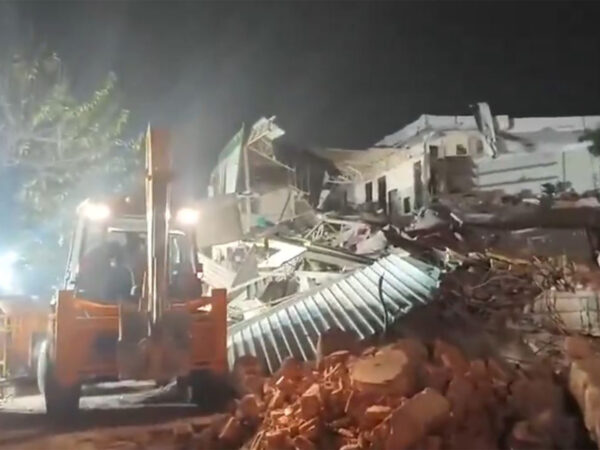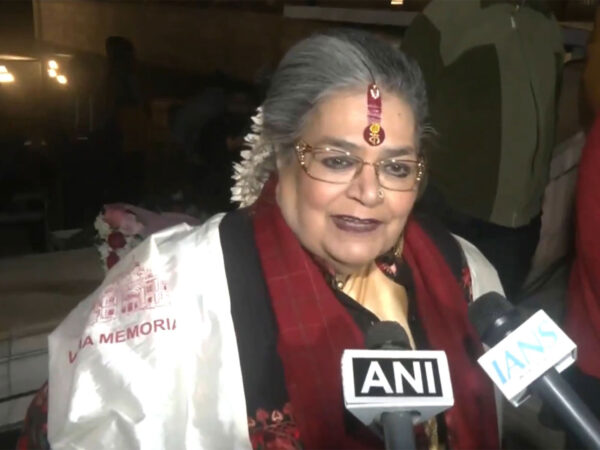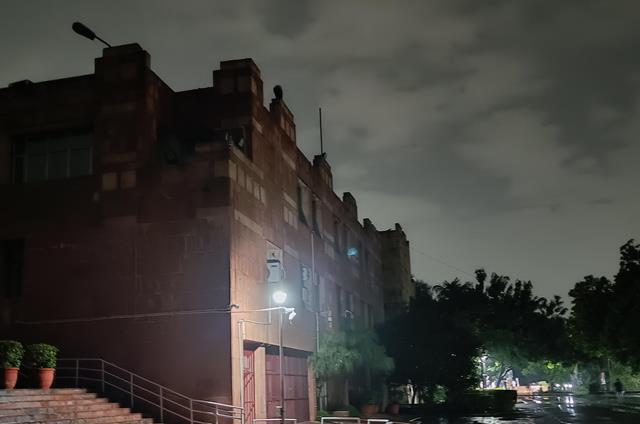
INDIA Bloc Searches For PM Face; BJP Targets 50% Vote In 2024 LS Polls
As the 2024 Lok Sabha elections draw near, India’s political landscape is undergoing a significant reshuffling. The emerging INDIA (Indian National Developmental Inclusive Alliance) consortium is gearing up to challenge the established National Democratic Alliance, setting the stage for an electoral showdown.
The political landscape of India is experiencing a profound transformation in anticipation of the 2024 elections. The rise of the INDIA alliance, a revamped version of the existing UPA, poses a formidable challenge to the enduring supremacy of the NDA. This transformation, characterised by shifting alliances, alterations in vote percentages, and fluctuations in seat allocations, highlights the dynamic and unpredictable nature of India’s electoral scenario.
Till now, the INDIA bloc have held four meeting. The first meeting of the joint opposition convened in Patna on June 23 and the second meeting was held in Bengaluru on July 17-18. The third meeting happened in Mumbai on August 31-September 1 and the fourth meeting was held on December 19 in the national capital.
INDIA (Indian National Developmental Inclusive Alliance) parties are seeking to put a united challenge against the BJP-led NDA in the 2024 Lok Sabha polls.
The 28 parties participated in the fourth meeting and kept their thoughts before the committee of the alliance.
Challenges for INDIA bloc
Coming up to the challenges which the INDIA bloc might face are finalising a seat-sharing arrangement and agreement on a PM face.
The centrality of the Congress to the bloc was inadvertently endorsed by Mamata Banerjee and Arvind Kejriwal, when they proposed Congress president Mallikarjun Kharge as the PM face of the INDIA bloc but Kharge said that the question of PM face could be decided after the Lok Sabha polls.
As the 2024 Lok Sabha elections loom just four months away, the allocation of seats becomes pivotal for the and INDIA bloc, especially after recent electoral setbacks.
This discontent among INDIA bloc leaders is not unprecedented, as evident from previous meetings.
During the Assembly elections statements made by SP chief Akhilesh Yadav and Congress state president Ajay Rai had created the rift between the parties. Later, the Congress high command had intervened and talked to the SP chief to solve the issue.
Samajwadi Party chief Akhilesh Yadav attacked its INDIA block ally Congress on caste census, reminding them that the party did not conduct a caste census when it was in power.
“Congress is the party that did not conduct caste census after independence… When all the parties in the Lok Sabha were demanding a caste census, they did not conduct a caste census,” Akhilesh Yadav told ANI Satna in poll-bound Madhya Pradesh.
Given that concerns such as the caste census failed to strike a chord with voters in recent state elections, leaders of the INDIA bloc may reconsider their strategy and work on formulating a fresh approach.
INDIA bloc meetings
The inaugural meeting of the Opposition coalition took place in Patna, with Bihar Chief Minister Nitish Kumar being the convenor. Fifteen opposition parties participated with the aim of consolidating their forces against the Modi led central government in the impending general elections.
In the second meeting held in Bengaluru 26 opposition parties forged an alliance. During the meeting, the coalition was christened INDIA, an acronym for the Indian National Developmental Inclusive Alliance.
In the Mumbai meeting, the opposition parties adopted resolutions to collectively contest the upcoming 2024 Lok Sabha elections while announcing that seat-sharing arrangements would be finalized as soon as possible in a spirit of give-and-take.
Moreover, in the fourth meeting INDIA bloc addressed various issues, including seat-sharing, a joint campaign blueprint, and devising a strategy to take on the BJP in the 2024 Lok Sabha polls.
The fourth meeting was held in the backdrop of escalating tensions between the government and the opposition over the suspension of parliamentarians during the winter session of Parliament.
Congress President Mallikarjun Kharge asserted that INDIA bloc parties will focus on seat-sharing talks at the state level, adding that if any issue arises, it will be taken up at the leadership of the alliance.
Kharge stated that all INDIA parties unanimously decided how to take the alliance forward. At least 8-10 meetings will be held together across the country.
INDIA bloc also passed the resolution on Electronic Voting Machines (EVMs) and the suspension of MPs from Parliament.
“INDIA parties reiterate that there are many doubts on the integrity of the functioning of the EVMs. These have been raised by many experts and professionals as well. There is widespread demand for a return to the ballot paper system,” the resolution stated.
It suggested that “Instead of the VVPAT slip falling in the box, it should be handed over to the voter who shall then place it in a separate ballot box after having verified his or her choice. 100 per cent counting of VVPAT slips should then be done.
Henceforth, the key challenge before the INDIA parties is to fight the BJP unitedly in the 2024 Lok Sabha election on an alternative common programme to counter the ruling dispensation.
The INDIA alliance, marked by a spectrum of opinions from the Left’s and J-K parties’ dissatisfaction to Shiv Sena’s vocal support for the ruling, must reconcile these differences to formulate a cohesive stance. This unified stance is crucial to effectively counter the BJP’s attempt to introduce another divisive issue to polarize voters in the heartland.
How BJP gearing up for 2024 Lok Sabha Polls
As the battle for 2024 begins, the BJP undeniably maintains the upper hand. After securing victories in three crucial Hindi heartland states–Madhya Pradesh, Rajasthan, and Chhattisgarh it being said that that the Bharatiya Janata Party (BJP) has strengthened its position to face the INDIA bloc in the 2024 Lok Sabha elections.
The Congress party was in power in Rajasthan and Chhattisgarh and was a major contender in Madhya Pradesh and Telangana. However, it only secured victory in the southern state, taking power from the dominant Bharat Rashtra Samithi (BRS).
After which, Congress will now be in power in three states–Himachal Pradesh, Karnataka, and Telangana.
The 3-1 scoreline in this round of assembly elections is a comforting signal for the BJP’s poll prospects next year.
The party had crafted its campaign around the PM, his welfare interventions and larger credibility.
During the recently concluded Assembly polls, PM Modi stood as the pivotal figure for the BJP, dispelling any concern about ‘sidelining’ party stalwarts.
The PM’s resonance with the electorate, along with the “Modi ki guarantee” slogan, won over Congress’s manifesto.
By messaging and strategy, the BJP effectively communicates the mantra of ‘sabka saath, sabka vishwas, and sabka prayaas’, emphasising Modi’s inclusive governance approach.
The ruling party is going all out to capture the hearts of people for the 2024 Lok Sabha elections. On December 22, the party headquarters hosted a meeting of BJP leaders from across the nation.
The Bharatiya Janata Party has set a target of achieving a 50 per cent vote share. Along with this, the party will start cluster meetings after January 15 and Yuva Morcha will hold 5000 conferences across the country.
The two-day meeting of BJP national office-bearers concluded on Saturday. In this meeting, BJP has set a target of achieving a 50 per cent vote share in the 2024 Lok Sabha elections. Along with this, the party will run a campaign across the country to connect with new voters. The BJP will organise programmes at booth level to connect with new voters.
According to sources, Union Home Minister Amit Shah has asked all the officials in the meeting to ensure a bumper victory margin in the Lok Sabha elections.
Cluster meetings will be organized by dividing Lok Sabhas across the country into clusters. In these clusters, Prime Minister Narendra Modi, Home Minister Amit Shah, Defence Minister Rajnath Singh, and BJP President JP Nadda will address public meetings.
Yuva Morcha will start new voter conferences on January 24. The BJP Yuva Morcha will organise 5,000 conferences across the country. Along with this, social conferences will also be organised across the country.
It was said in the meeting that party leaders should not wait for the announcement of the list of candidates. Every BJP leader must now gear up to ensure victory by a record margin in the 2024 Lok Sabha elections
It is expected that the BJP will begin an extensive campaign for the elections that are not even six months away.
As the BJP government aims to transform India into a developed nation by the year 2047, the BJP has begun the Viksit Bharat campaign, named Viksit Bharat@2047
The outcomes have strengthened Modi’s role as the triumphant figurehead for the party. Despite Congress’s efforts to buck the anti-incumbency trend, Modi’s guarantees and the BJP’s persistent emphasis on highlighting Congress’s shortcomings thwarted their endeavours.
The safety-first stance of the opposition parties stems from the BJP’s assembly wins, which it plans to build upon with the upcoming inauguration of the Ram Temple in Ayodhya, raising concerns that the insertion of the Jammu and Kashmir issue into the debate will further help the BJP paint the opposition as pandering to the “vote-bank”.
It is expected that the BJP, in its campaign, will highlight the Ram Temple that will be inaugurated in Ayodhya on January 22, 2024, just a few months ahead of the national elections.
Along with this, BJP has decided to run a campaign for Ram Mandir celebrations starting January 1, in which BJP workers will go door to door in all the villages across the country and encourage ten crore families to participate in Diya Lightning programs for Ram Temple in Ayodhya.
The BJP is likely to highlight its success stories over its two terms at the Centre, including, Swachh Bharat Abhiyan, the Pardhan Mantri Awas Yojna, Digital India, the success of Chandrayaan 3 and various other schemes that have benefited the citizens.
With these victories in the three states, the BJP, along with its allies, now controls 17 states.
The evolving political narrative in India will play a crucial role in influencing the upcoming elections, necessitating careful scrutiny.
Earlier in the 2019 Lok Sabha elections, the NDA won 353 seats, the UPA stood at 91, and Others won 98. The voting was staggered in seven phases between April 11 and May 19, in which around 67 per cent of the nearly 900 million eligible people exercised their franchise to elect 542 members of the Lok Sabha.
The 2024 Lok Sabha elections will be held next year that is likely to be between the Modi government’s NDA alliance and the INDIA bloc. (ANI)
For more details visit us: https://lokmarg.com/



